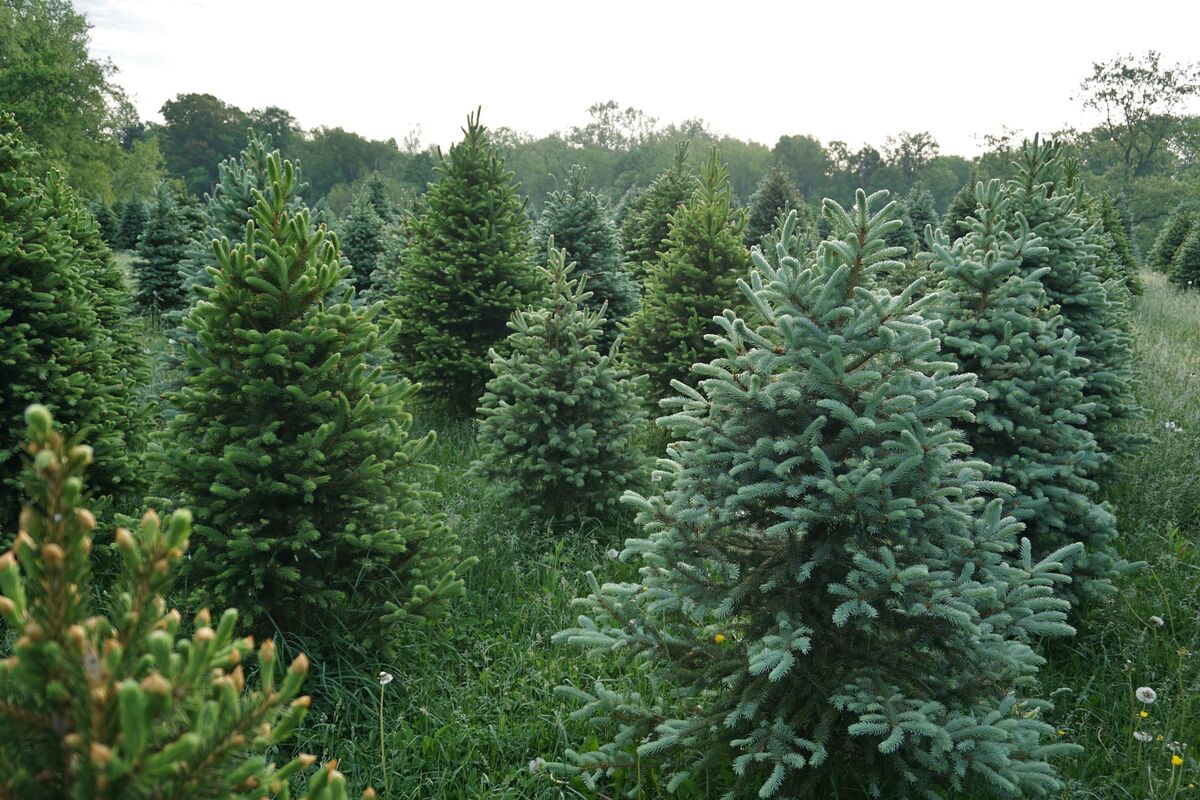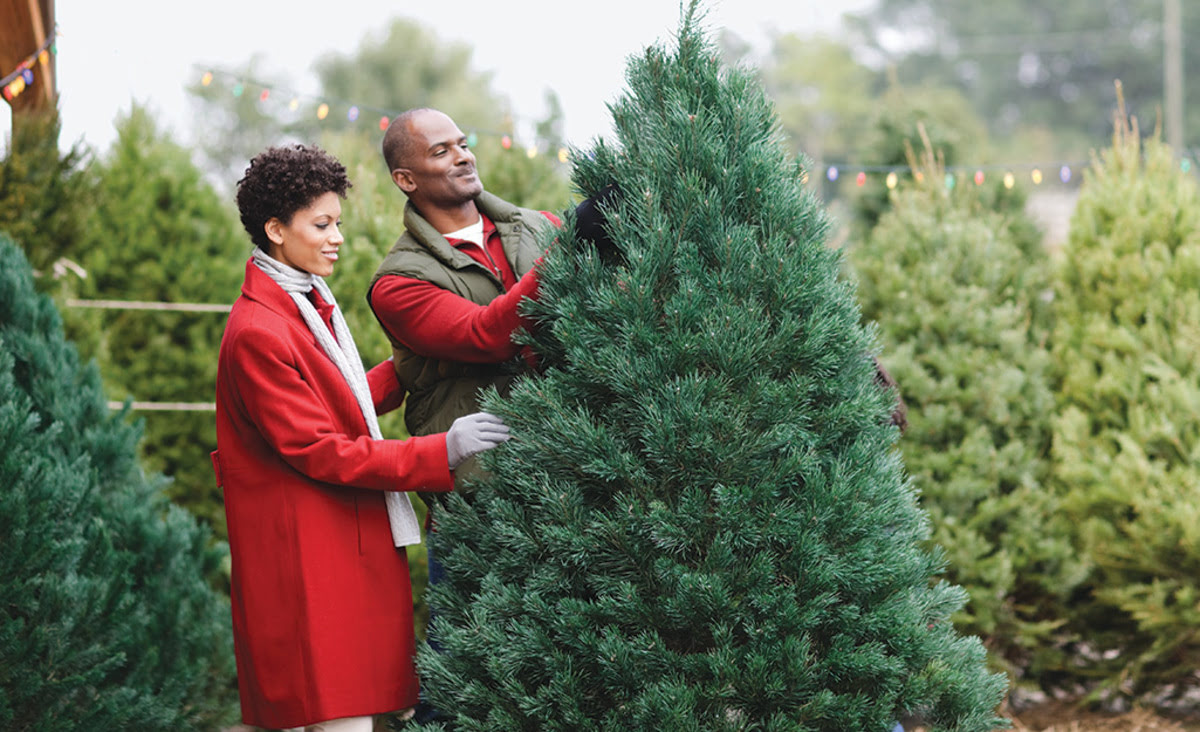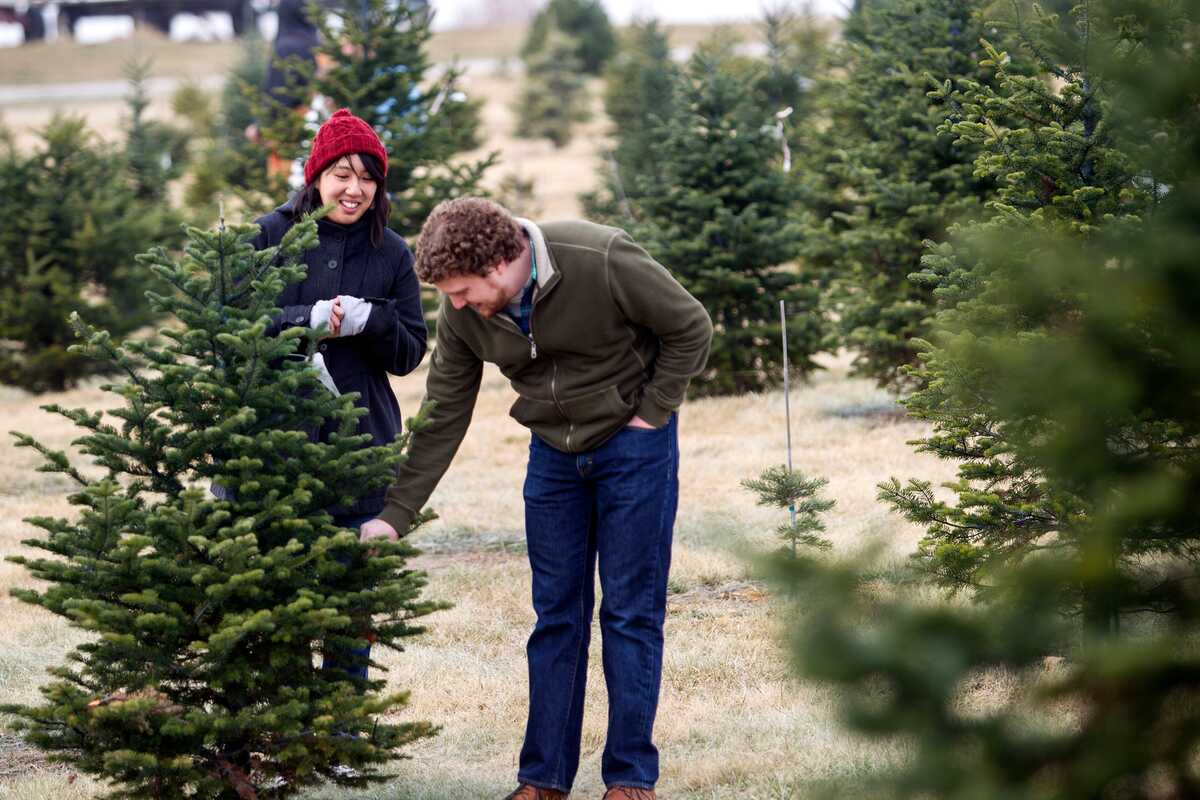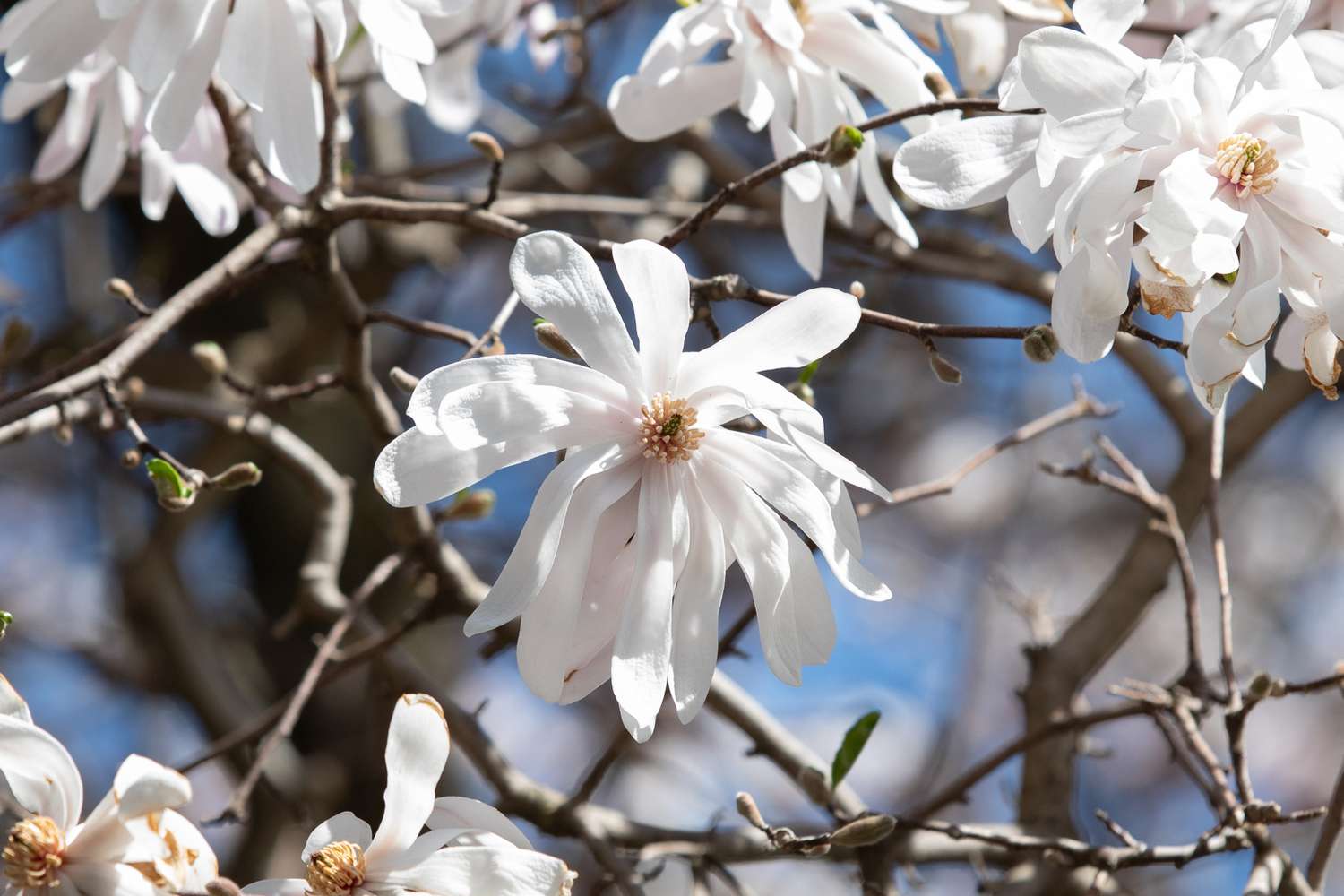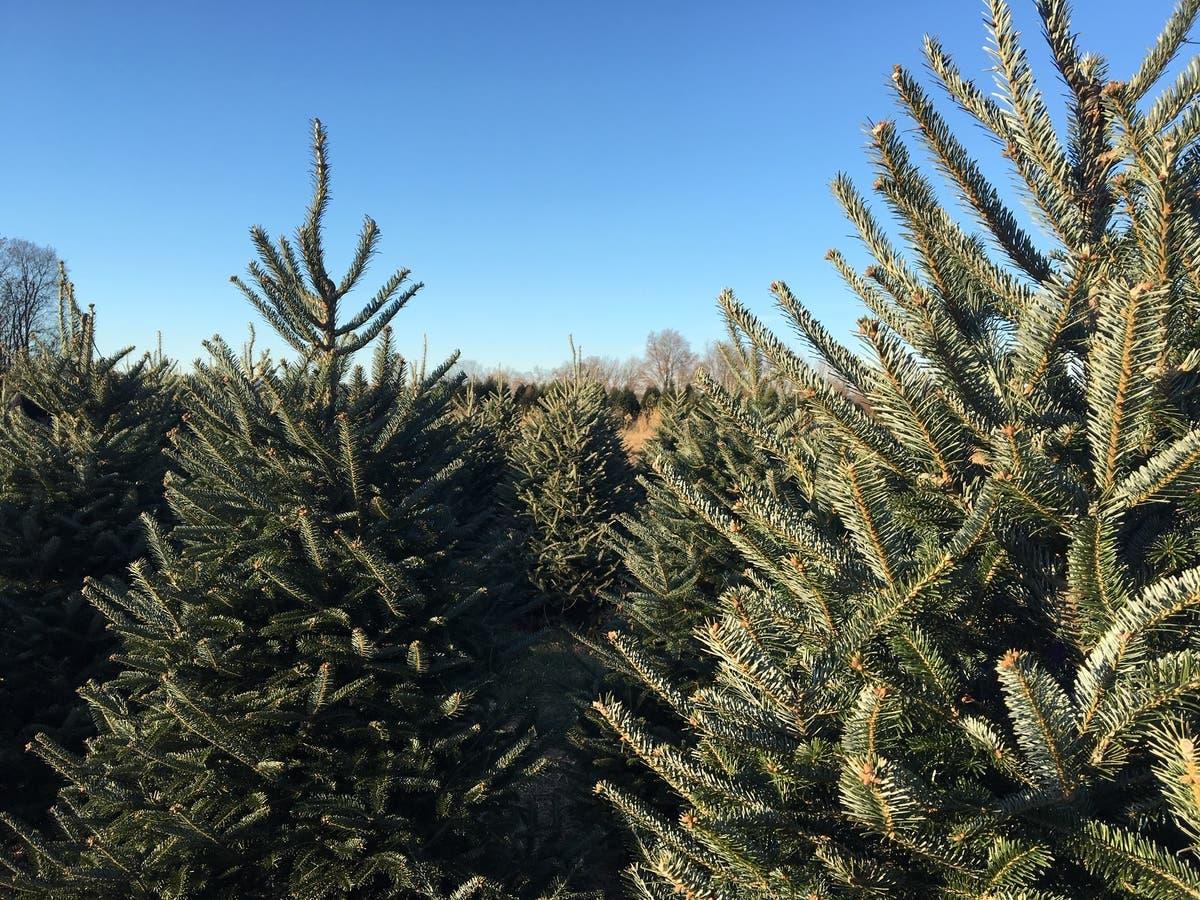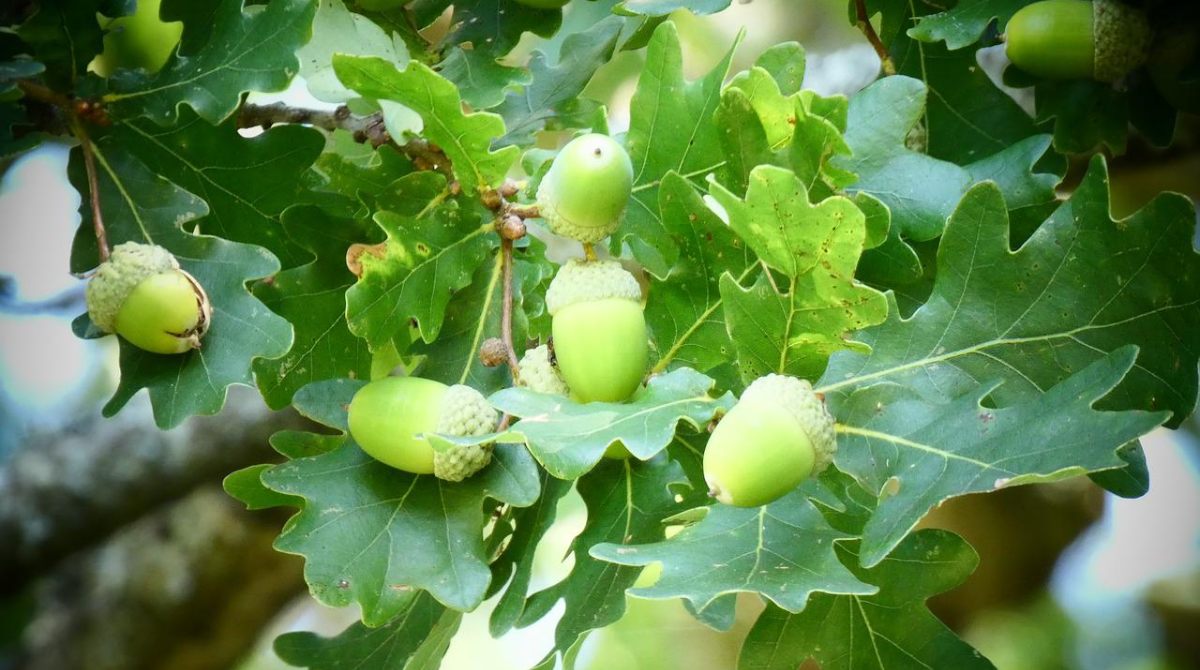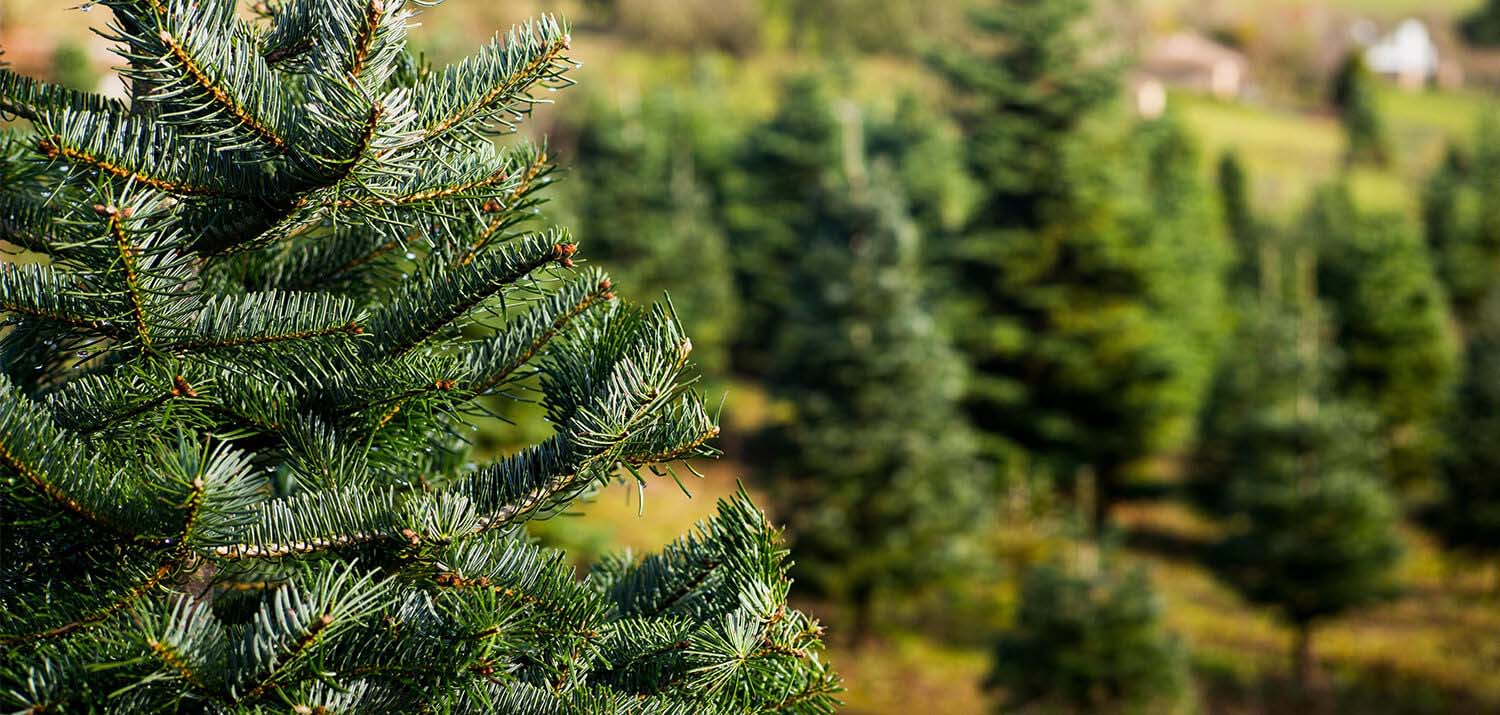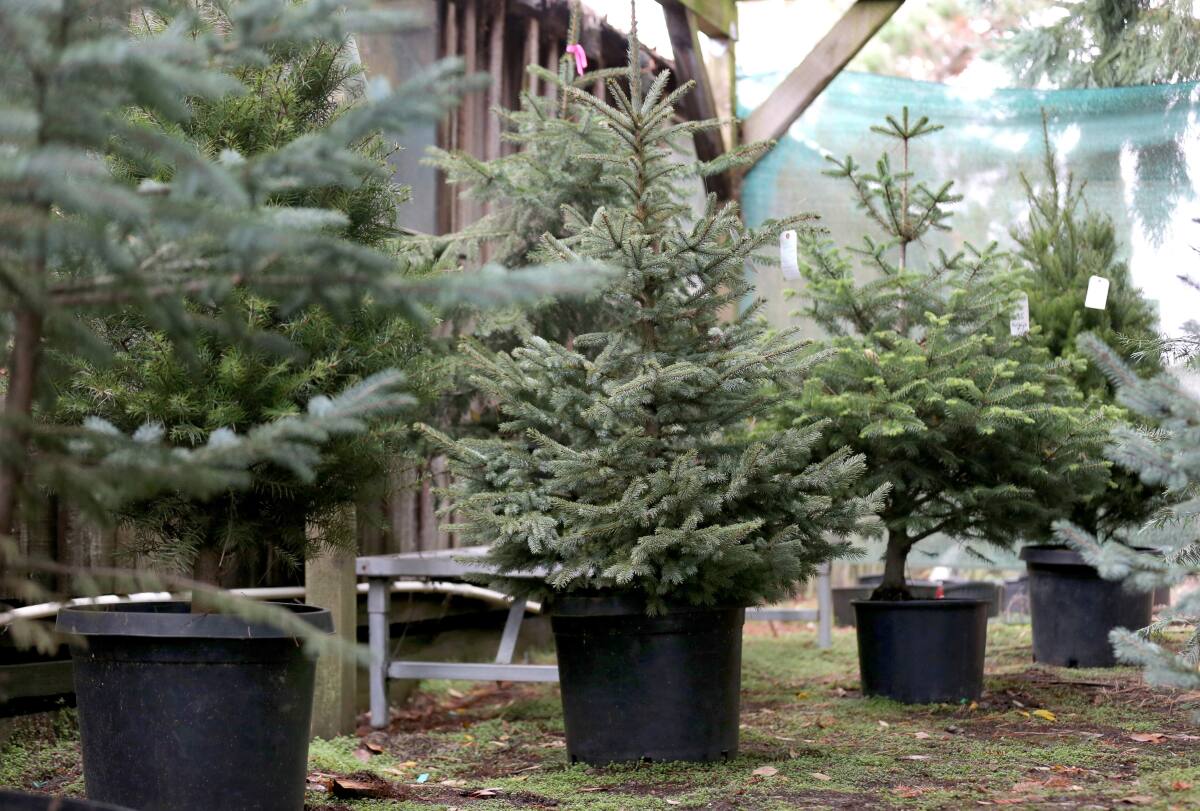Home>Gardening News and Trends>Latest News>Which Us President Banned Christmas Trees In The White House
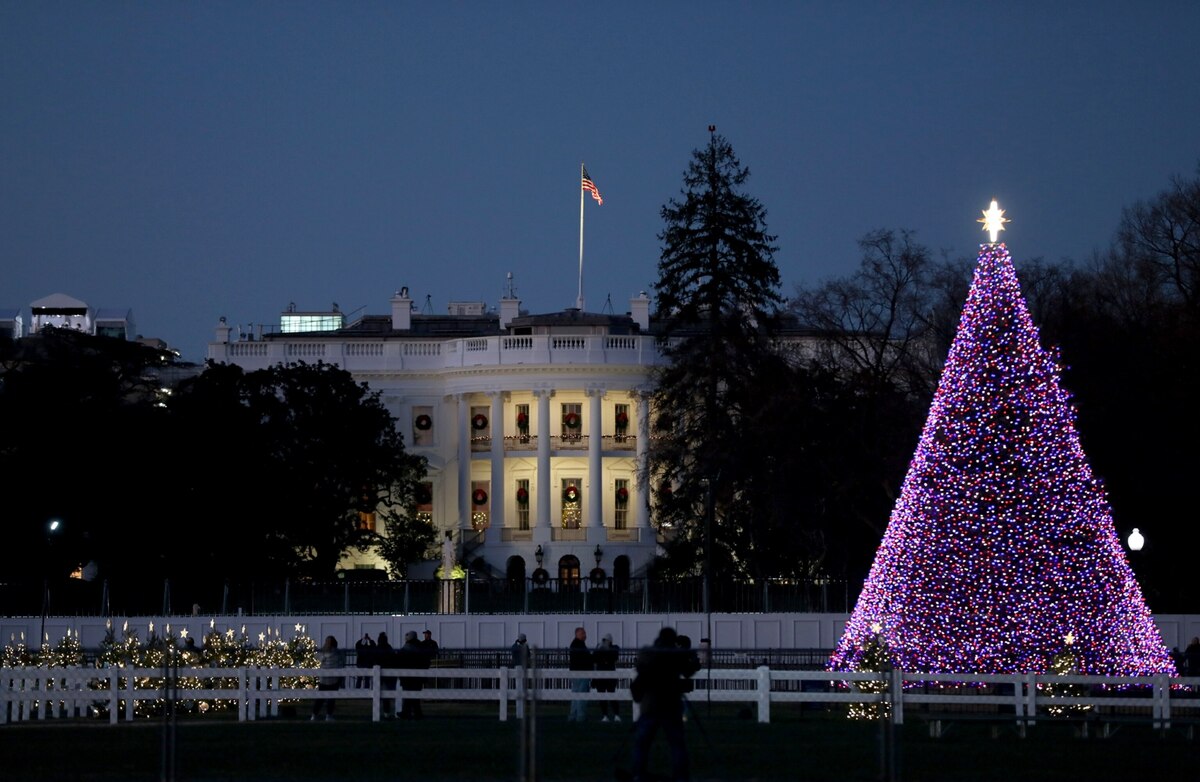

Latest News
Which Us President Banned Christmas Trees In The White House
Modified: January 22, 2024
Get the Latest News on which US President banned Christmas trees in the White House. Uncover the historical significance and controversy surrounding this decision.
(Many of the links in this article redirect to a specific reviewed product. Your purchase of these products through affiliate links helps to generate commission for Chicagolandgardening.com, at no extra cost. Learn more)
Table of Contents
Introduction
Welcome to the intriguing history of Christmas trees in the White House – a tale filled with tradition, controversy, and public sentiment. For centuries, Christmas trees have adorned the iconic residence, serving as a symbol of joy and celebration during the holiday season. However, there was a time when a U.S. President made the controversial decision to ban Christmas trees in the White House. This daring move sparked widespread debate and captured the attention of the nation.
As we delve into this fascinating historical journey, we will explore the context of Christmas tree traditions in the White House, uncover the name of the President who imposed the ban, delve into the reasons behind this controversial decision, examine the public’s reaction, and ultimately, discover how the ban was eventually reversed.
The Christmas tree has a rich history in America, dating back to the early 19th century. It was President Franklin Pierce who introduced the first recorded Christmas tree in the White House in 1856, setting the precedent for future Presidents to follow. Over the years, the Christmas tree in the White House became an iconic symbol of holiday cheer and national pride.
However, there came a time when a President took a bold stance against this long-standing tradition. The ban on Christmas trees in the White House created an uproar throughout the country, highlighting the tension between tradition and change, and raising important questions about the role of the President in shaping national celebrations.
In the following sections, we will explore the historical context leading up to the ban, the President responsible for implementing it, the reasons behind this controversial decision, the public’s reaction, and the eventual reversal of the ban. Join us as we unravel the captivating story behind the ban on Christmas trees in the White House.
Historical Context of Christmas Trees in the White House
The tradition of having a Christmas tree in the White House dates back to the early 19th century when President Benjamin Harrison’s administration first adorned the White House with a decorated tree in the 1880s. However, it was President Franklin Pierce who is credited with introducing the first recorded Christmas tree in the White House in 1856.
Since then, Christmas trees have become an integral part of the holiday celebrations at the White House. Each year, a grand tree is carefully selected and adorned with ornate decorations and twinkling lights to bring joy and festive spirit to the iconic residence. The tree serves as a symbol of unity, tradition, and goodwill during the holiday season.
Over the years, various Presidents and First Ladies have put their unique twist on the Christmas tree decorations, reflecting their personal styles and preferences. From elegant and traditional themes to whimsical and modern interpretations, each tree has showcased the essence of the respective administration.
This beloved tradition has provided a sense of continuity in the ever-changing political landscape and has fostered a sense of celebration and unity among the American people. The annual lighting ceremony of the National Christmas Tree on the White House Ellipse has become a cherished event, bringing together people from all walks of life to witness the illumination of this iconic symbol.
Beyond its physical presence, the Christmas tree in the White House embodies the spirit of the holiday season and serves as a reminder of the importance of family, love, and joy. It symbolizes the collective memories and traditions that bind the nation together.
However, amidst this long-standing tradition, one President made a controversial decision that temporarily halted the display of Christmas trees in the White House. In the next section, we will unveil the President behind this surprising ban and explore the reasons that led to this unprecedented move.
The President Who Banned Christmas Trees in the White House
In a twist that surprised the nation, it was President Theodore Roosevelt who implemented the controversial ban on Christmas trees in the White House. Roosevelt, known for his progressive policies and environmental advocacy, made the decision to prohibit the display of Christmas trees during his presidency.
The exact reasons behind Roosevelt’s decision to ban Christmas trees are a subject of debate among historians. One widely accepted theory is that Roosevelt saw the use of Christmas trees as wasteful and harmful to the environment. As a conservationist, he was concerned about the excessive logging and the detrimental impact it had on forests. Roosevelt believed that by eliminating the display of Christmas trees, he could set an example of responsible environmental stewardship.
Another possible reason behind the ban was Roosevelt’s desire to modernize the White House. During his time in office, Roosevelt introduced several changes and renovations to the residence. It is speculated that he viewed the Christmas tree tradition as old-fashioned and unnecessary in the context of his progressive reforms.
Regardless of the reasons, Roosevelt’s decision to ban Christmas trees garnered significant attention and sparked considerable controversy. The ban struck a nerve with the American public, who viewed the Christmas tree as a cherished symbol of holiday joy and tradition.
Interestingly, it is worth noting that Roosevelt’s ban on Christmas trees specifically applied to the executive offices of the White House, rather than the public spaces. While the official banishment of Christmas trees from the upper echelons of the White House caused disappointment, the public spaces continued to feature festive displays, including magnificent trees.
The ban on Christmas trees during Roosevelt’s presidency led to a tumultuous debate about the role of tradition and environmental consciousness in American culture. The controversy surrounding his decision persisted throughout his time in office and remains a notable aspect of his legacy even today.
In the following section, we will explore the various arguments and perspectives surrounding the ban on Christmas trees in the White House and examine the public’s reaction to this unprecedented decision.
Controversial Reasons Behind the Ban
The ban on Christmas trees in the White House implemented by President Theodore Roosevelt sparked heated debates and raised several controversial reasons for its imposition.
First and foremost, one of the key arguments put forth by Roosevelt was his concern for the environment. As a staunch conservationist, he believed that the widespread use of Christmas trees contributed to deforestation and the destruction of natural resources. In an era when logging practices were less regulated, Roosevelt saw the excessive cutting down of trees for decorative purposes as a threat to the integrity and sustainability of forests.
Furthermore, Roosevelt’s ban on Christmas trees can be seen as a symbol of his desire to modernize the White House. He sought to transform the presidency into a more progressive and forward-thinking institution. In his view, the display of Christmas trees represented an outdated tradition that did not align with his vision of a modern nation. By eliminating this practice, Roosevelt aimed to shed a more contemporary light on the presidency and bring it in line with the changing times.
Another controversial reason behind the ban is rooted in political sentiment. Roosevelt, a progressive Republican, faced criticism from some conservative elements within his party. By banning Christmas trees, he may have sought to distance himself from perceived elements of excess and frivolity associated with the Republican Party at the time. The ban served as a statement of his commitment to responsible governance and fiscal restraint.
While these reasons for the ban may have resonated with Roosevelt and his belief system, they did not sit well with a significant portion of the American public. Many saw the ban as an attack on cherished traditions and a violation of personal freedoms. The Christmas tree, with its centuries-old symbolism of hope, joy, and unity, held deep sentimental value for many citizens. The ban was perceived as an unnecessary intrusion into private celebrations and cultural practices.
Moreover, critics of the ban argued that Roosevelt’s concerns about deforestation could have been addressed through responsible sourcing and sustainable practices. They believed that education and awareness about responsible tree selection and environmental stewardship would have been more effective in preserving forests than outright forbidding the display of Christmas trees.
The controversial reasons behind the ban on Christmas trees in the White House ignited passionate discussions about the balance between tradition and progress, environmental responsibility, and individual liberty. The public’s reaction to this decision demonstrated the enduring significance of the Christmas tree as a symbol of holiday spirit and cultural heritage in the United States.
Next, we will delve into the public’s reaction to the ban and the impact it had on Christmas celebrations across the country.
Public Reaction to the Ban
The ban on Christmas trees in the White House implemented by President Theodore Roosevelt stirred up immense public reaction and sparked national discourse. The American public, deeply attached to the tradition of Christmas trees, responded with a combination of disappointment, outrage, and defiance.
One of the primary sentiments expressed by the public was a sense of loss and nostalgia. The Christmas tree had long been considered a beloved symbol of joy, togetherness, and holiday festivities. Many felt that the ban stripped away an essential part of the holiday season and dampened the spirit of Christmas.
Public sentiment was often expressed through protests and rallies, where individuals gathered to voice their disapproval of the ban. There were petitions and letters sent to the White House, pleading with Roosevelt to reverse his decision and reinstate the tradition of Christmas trees. The outcry was not limited to everyday citizens; politicians, religious leaders, and even children joined the chorus of voices advocating for the preservation of the cherished tradition.
The media played a pivotal role in amplifying the public’s reaction. Newspapers published articles and editorials denouncing the ban and highlighting the emotional impact it had on families across the country. Political cartoons depicting a Christmas tree-less White House satirized Roosevelt’s decision, further fueling the discontent.
Despite the ban in the executive offices of the White House, the public spaces continued to showcase elaborate Christmas displays, including magnificent trees. This provided a glimmer of hope and consolation, reaffirming the importance of the tradition in the eyes of the American people.
In response to the overwhelming public disapproval, some individuals took matters into their own hands. They defiantly displayed Christmas trees in their homes and workplaces, resisting the ban imposed by Roosevelt. This act of civil disobedience exemplified the determination and deep-rooted attachment that many held for the tradition.
Over time, the public’s reaction and continuous advocacy began to influence Roosevelt’s stance on the ban. The overwhelming pressure compelled him to reconsider his position and assess the broader impact of the ban. The strong public sentiment, combined with the mounting criticism from politicians and the media, ultimately played a role in shaping the outcome of this controversial issue.
Next, we will explore how the ban on Christmas trees in the White House was eventually reversed, marking a turning point in this notable chapter of American holiday traditions.
Reversal of the Ban
After facing significant public backlash and ongoing pressure, President Theodore Roosevelt eventually reversed the ban on Christmas trees in the White House. The decision to lift the ban marked a turning point in the contentious chapter of American holiday traditions.
Roosevelt’s change of heart was influenced by several factors. Firstly, he realized the emotional and cultural significance that Christmas trees held for the American people. The overwhelming public outcry, coupled with the advocacy from politicians, religious leaders, and the media, shed light on the depth of attachment and the importance of the tradition in fostering a sense of unity and joy during the holiday season.
Additionally, it became apparent that the ban on Christmas trees did not effectively address the conservation concerns Roosevelt had initially raised. Many argued that responsible sourcing and sustainable practices could be implemented to preserve forests while still honoring the cherished tradition of Christmas trees. These alternative approaches resonated with Roosevelt and prompted him to reconsider his environmental stance.
The decision to reverse the ban was announced to the public, generating widespread relief and celebration. The news was met with great enthusiasm as families, communities, and the nation as a whole embraced the return of the beloved tradition. The display of Christmas trees once again became an integral part of the festive atmosphere at the White House, symbolizing the joy, hope, and unity that the holiday season represents.
With the ban lifted, subsequent Presidents and First Ladies continued the long-standing tradition of adorning the White House with beautifully decorated trees each holiday season. The grandeur and artistry of these trees became a source of inspiration and admiration for visitors from around the world.
The reversal of the ban on Christmas trees highlighted the power of public opinion and the ability of the American people to rally for traditions that hold deep cultural significance. It served as a reminder that the preservation of cherished customs can coexist with environmental concerns, and that responsible practices can be implemented to ensure sustainability.
The reinstatement of Christmas tree displays in the White House not only restored a treasured tradition but also reinforced the enduring spirit of the holiday season. It represents a reaffirmation of unity, hope, and the importance of shared moments of joy and celebration.
As we conclude this exploration of the ban on Christmas trees in the White House, it is evident that this intriguing and controversial chapter in American history ultimately resulted in the preservation of a cherished tradition and the recognition of its profound impact on the nation’s cultural fabric.
Conclusion
The ban on Christmas trees in the White House, implemented by President Theodore Roosevelt, was a contentious decision that stirred public controversy and sparked passionate debates. The reasons behind the ban, including concerns for the environment and a desire to modernize the presidency, were met with disappointment and resistance from the American people.
Public outcry and pressure eventually led to the reversal of the ban, highlighting the power of public sentiment and the enduring significance of cherished traditions. The restoration of Christmas tree displays in the White House symbolized the importance of unity, tradition, and cultural heritage during the holiday season.
This captivating chapter in American history emphasized the delicate balance between tradition, progress, and environmental responsibility. It showcased the ability of the American people to voice their opinions and advocate for the preservation of customs that hold deep meaning and connect communities on a shared level.
The ban on Christmas trees in the White House and its subsequent reversal serve as a reminder of the resilience of traditions and the importance of balancing personal freedoms with broader concerns. It also underscores the cultural symbolism and emotional significance of the Christmas tree as a symbol of joy, togetherness, and hope during the holiday season.
As we reflect upon this historical journey, we are reminded of the enduring power of traditions in shaping our identity and fostering a sense of belonging. The Christmas tree in the White House stands as a testament to the continuity of cultural celebrations and the collective memories that bind a nation together.
As future generations continue to celebrate the holiday season with the presence of Christmas trees in the White House, it is a testament to the resiliency and joy that can be found in upholding cherished traditions, embracing change, and finding common ground.
May the story of the ban on Christmas trees in the White House serve as a timeless reminder that the power of tradition, unity, and hope transcends political boundaries and reminds us of the values we hold dear as a nation.
